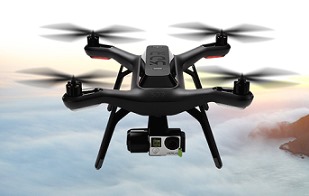다음은 Simon Kirby(http://0x.ca/)의 오픈 RapidESC 펌웨어 개발 사이트입니다.
This tree contains Atmel AVR assembly code for ATmega-based 3-phase sensor-less motor electronic speed control (ESC) boards, originally for Turnigy and similar models. This work is based on Bernhard Konze's "tp-18a" software, which was a port from his earlier personal work to the TowerPro 18A and original (not current!) Turnigy Plush boards. Please see tgy.asm for Bernhard's license.
이 목록은 ATmega 기반의 3상 브러쉬리스 모터 전자 속도 제어기(ESC) 보드를 위한 Atmel AVR 어셈블리 코드를 포함합니다. 원래는 Turnigy와 유사한 모델을 위한 것이었습니다. 이 프로젝트는 Bernhard Konze의 'tp-18a' 소프트웨어에 기반을 둡니다. 이것은 TowerPro 18A과 원래의 Turnigy Plush 보드의 그의 앞선 개인적인 프로젝트를 포트(port)한 것이었습니다. Bernhard의 라이센스에 대해서 tgy.asm을 보시기 바랍니다.
Patches and comments are always welcome! Let me know how it goes!
패치와 주석은 항상 환영합니다. 알려주세요!
Features
-
16MHz operation on most boards
-
16-bit output PWM with full clock rate resolution (~18kHz PWM with a POWER_RANGE of 800 steps)
-
24-bit timing and PWM pulse tracking at full clock rate resolution
-
ICP-based pulse time recording (on supported hardware) for zero PWM input control jitter
-
Immediate PWM input to PWM output for best possible multicopter response (but NOT where soft start or really any significant current limiting is needed!)
-
Accepts any PWM update rate (minimum ~5microseconds PWM low time)
-
Optimized interrupt code (very low minimum PWM and reduced full throttle bump)
-
Configurable board pin assignments by include file
-
Smooth starting in most cases
-
Forward and reverse commutation supported, including RC-car style reverse-neutral-forward PWM ranges, with optional braking
Hardware
See http://wiki.openpilot.org/display/Doc/RapidESC+Database and/or https://docs.google.com/spreadsheet/ccc?key=0AhR02IDNb7_MdEhfVjk3MkRHVzhKdjU1YzdBQkZZRlE for a more complete list. Some board pictures here: http://0x.ca/sim/esc/
http://wiki.openpilot.org/display/Doc/RapidESC+Database 그리고/또는 좀더 완전한 목록을 위해서 https://docs.google.com/spreadsheet/ccc?key=0AhR02IDNb7_MdEhfVjk3MkRHVzhKdjU1YzdBQkZZRlE을 보시기 바랍니다. 일부 보드의 그림은 여기에 있습니다: http://0x.ca/sim/esc/
Tested boards by target:
-
afro:
-
afro2:
-
AfroESC 2 (prototype)
-
afro_hv:
-
AfroESC HV (high voltage, with all-N FETs and drivers)
-
afro_nfet:
-
AfroESC with all-N FETs (revision 3)
-
birdie70a:
-
Hobby King Birdie 70A (BIRD-60A)
-
Hobby King Red Brick 200A (RB200A, black board)
-
bs:
-
Hobby King 6A (HK_261000001)
-
Hobby King 10A (HK_261000002)
-
Hobby King 40A (F-40A)
-
Hobby King 60A (F-60A)
-
bs_nfet:
-
Hobby King 20A (F-20A)
-
Hobby King 30A (F-30A)
-
bs40a:
-
Hobby King BlueSeries 40A (and some Mystery 40A boards)
-
dlu40a:
-
Pulso Advance Plus DLU40A with opto-isolated inverted PWM input
-
Hobby King Multistar 45A
-
dlux:
-
Turnigy dlux 20A SBEC
-
hk200a:
-
Hobby King SS Series 190-200A (HK-SS200ALV)
-
RCTimer 50A TQFP version
-
kda:
-
Keda 12A rev B with inverted PWM input (30A should also work)
-
Dynam 18A, 25A with Blue Heat Shrink
-
Hobby King Multistar series (30A and under)
-
maytech30a:
-
Maytech 30A and 20A, complementary PWM
-
maytech40a:
-
Maytech 40A, complementary PWM
-
maytech60a:
-
Maytech 60A, complementary PWM
-
mkblctrl1:
-
MikroKopter BL-Ctrl v1.x (flashable by ISP only)
-
rb50a.hex
-
Hobby King Red Brick 50A (RB50-ESC)
-
rb70a.hex
-
Hobby King Red Brick 70A (RB70A)
-
Hobby King Red Brick 200A (RB200A-BTO, black board)
-
rct50a:
-
RCTimer 50A older MLF version
-
tbs:
-
Team BlackSheep TBS 30A ESC (ICP input version)
-
tp:
-
Original TowerPro 17A, 25A
-
Hobby King SS models without "-HW" in part number
-
tp_8khz:
-
tp at 8kHz PWM (workaround for DYS/HK-SS clones with PWM noise problems)
-
tp_i2c:
-
tp modified for I2C input (old ADC4 routed to ADC1)
-
tp_nfet:
-
Newer TowerPro 25A with inverted low side (BL8003 drivers)
-
tp70a:
-
TowerPro 70A with BL8003 FET drivers (inverted low side)
-
tgy (these boards typically have no external resonator):
-
Original TowerPro 18A
-
Original Turnigy Basic and Turnigy Plush 10A, 18A, and 25A (Hobbywing OEM)
-
RCTimer 10A, 18A, 20A, 30A, 40A (18A, 20A, 30A are same board with more or less FETs)
-
Hobby King SS models with "-HW" in part number
-
tgy6a:
-
Original Turnigy Plush 6A
Turnigy Plush 18A
Notes
-
If it breaks, you get to keep both pieces! (만일 부러지면, 두 조각을 그대로 유지하면 됩니다!)
-
Use at your own risk, and always test first without propellers! (손상을 감안해야 하며 항상 프롭 없이 테스트를 먼저 해야 합니다!)
-
New Turnigy Plush, Basic, Sentry and Pentium boards (Hobbywing OEM) have all switched to SiLabs C8051F334, d'oh! (새로운 Turnigy Plush, Basic, Sentry 그리고 Pentium 보드들(Hobbywing OEM)은 모두 SiLabs사의 C8051F334으로 전환한 상태입니다.)
-
If your ESC has 6 pads and an AVR, it's probably compatible; the pads are MOSI, MISO, SCLK, GND, VCC, and RESET. If it has 4 pads, it is probably a newer SiLabs-based one, for which this code will not work. (Except HK_261000001 which has 4 pads but has an AVR.) (여러분의 ESC가 6개의 패드와 AVR을 사용한다면 아마도 호환가능할 것입니다; 패드는 MOSI, MISO, SCLK, GND, VCC, 그리고 RESET입니다. 만일 4개의 패드를 가지고 있다면, 아마도 이것은 이 코드에서 동작하지 않는 새로운 SiLabs 칩을 사용하는 보드일 것입니다.(HK_261000001는 예외로 4개의 패드를 갖지만 AVR을 사용합니다))
-
I build and maintain this in Linux with AVRA (1.3.0 or newer). Patches welcome for AVR Studio APS files, etc. (저는 AVRA (1.3.0 or newer)로 Linux 상에서 컴파일하였습니다. AVR Studio *.aps 파일의 패치 또한 환영합니다.)
-
The TowerPro/Turnigy Plush type boards typically do not come with external oscillators, which means their frequency drifts a bit with temperature and between boards. Multicopters and RC-car/boat controllers (with a neutral deadband) would probably be better on a board with an external oscillator. The Mystery/BlueSeries boards typically have them, as well as most higher current boards. (TowerPro/Turnigy Plush 타입의 보드는 전형적으로 외장 오실레이터를 갖지 않는데 이것은 ESC의 주파수가 온도와 보드 사이에서 약간 변동될 수 있음을 의미합니다. (데드밴드를 가진) 멀티콥터와 RC자동차/보트 콘트롤러는 아마도 외장 오실레이터를 가진 보드에서 더 좋을 수 있습니다. Mystery/BlueSeries 보드는 전형적으로 외장 오실레이터를 가집니다. 게다가 가장 높은 전류를 갖는 보드입니다.)
-
This doesn't yet check temperature or battery voltage. This is not desired on multi-rotor platforms; however, people still want to use this on planes, cars, boats, etc., so I suppose I'll add it. (이것은 아직 온도와 밧데리 전압을 체크하지 않습니다. 이것은 멀터로터 플랫폼에서 요구되는 것이 아닙니다; 그러나 사람들이 비행기나 자동차, 보트 등에 이를 사용하기를 원한다면 저는 이 기능을 추가할 수 있습니다)
'Radio Control > ESC' 카테고리의 다른 글
| PX4ESC의 스펙 (0) | 2015.12.08 |
|---|---|
| ESC32의 스펙 (0) | 2015.12.04 |
| RapidESC FAQ's (0) | 2014.06.11 |
| RapidESC Flashing (0) | 2014.06.03 |
| RapidESC란? (0) | 2014.05.26 |
















